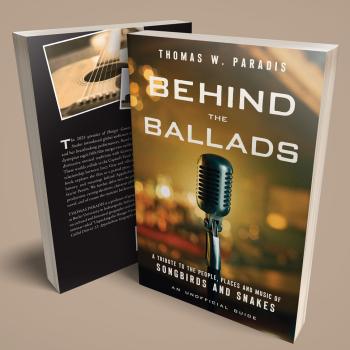I am grateful to Larry Hurtado for having taken the time to reply once again and continue the conversation. I am very appreciative of the way Hurtado has nuanced his position, and agree with his stance to a large extent. I believe that his latest blog post in our conversation helps clarify both the extent of our agreement and the precise points on which we disagree.
First, in The Only True God I cite a variety of inscriptions in addition to the more frequently discussed textual sources, and about these Hurtado wrote “they don’t serve as real analogies or precedents for what we’re trying to understand in historical terms.” I both agree and disagree – he rightly points out that “they don’t comprise evidence of anything like the programmatic, regularized constellation of public/corporate devotional practices that seem to have characterized earliest Christian circles.” This is certainly true. But one point on which we seem to disagree is whether early Christian devotional practices were controversial in their earliest Jewish setting, and if so why. I am not persuaded that engaging in programmatic, regularized practices which closely resemble practices that other Jews occasionally engaged in would have been controversial simply because of the increased frequency or systematization.
As for Hurtado’s second point in his blog post, I find myself puzzled, and do not recognize my own position in Hurtado’s words. He writes:
McGrath proposes that these early Christian devotional practices are accounted for because Jesus was a real historical person whom believers saw as Messiah. But there were a number of real historical figures taken by their followers as Messiah, and yet we have no evidence suggesting that any of these figures became the recipient of corporate devotion in the way that Jesus was in early Christian circles. So, again, the explanation offered by McGrath seems to me to founder on the rocks of historical data.
Whatever Hurtado may have meant by the above, and whatever I may have written that led him to write it, clearly the mere historicity of Jesus does not account for the distinctive Christian configuration of beliefs and practices. I apologize if I wrote anything that seemed to imply otherwise.
Perhaps Hurtado is asking me to explain why the Christian movement continued and developed its distinctive corporate worship practices, while other messianic movements in which the leader was killed disappeared. Here I agree with Hurtado that religious experiences would have been an important element in persuading some founding members of the Christian movement that Jesus had been raised from the dead and vindicated through exaltation to heaven.
Having said this, it should also be pointed out that it was precisely persistence in maintaining that Jesus, who had been crucified by the Romans, was the Messiah, which was a central element in the controversy between Christian and non-Christian Jews. Paul refers to this when he says that the proclamation of Christ crucified (not Christ exalted or enthroned per se) was “a stumbling block to the Jews” (1 Corinthians 1:23).
Since I agree with Hurtado that the distinctive Christian configuration of devotional practices and beliefs was a development within rather than a departure away from Jewish monotheism, it then becomes important to ask what led to conflicts between Christian and non-Christian Jews. Within Judaism, having a figure occupy an exalted status as God’s agent was not unknown, nor is there evidence that it was controversial per se in or prior to the first century, as Hurtado’s One God, One Lord has shown.
I believe what was controversial about early Christianity was the affirmation that Jesus the crucified had been exalted to God’s right hand, a place of authority second only to God – that he was a crucified and exalted Messiah in spite of this seeming to be an oxymoron. We can only speculate about whether, if Christians had developed their distinctive practices in relation to a future, expected Messiah who had not been and would not be crucified, their practices would have been considered controversial. I for one do not see any particular reason to believe that they would have been.
And so it is at this point that I find the heart of the disagreement between Larry Hurtado and myself. Hurtado believes (if I have understood him correctly) that it was the emphatic, repeated, systematic insistence on a figure holding this status that led to objections. In my own view, there is no reason such a development should have been inherently objectionable. And so I propose instead that it was the fact that it was a crucified man, a seemingly failed Messiah, that was given this status by Christians that was most objectionable from the perspective of non-Christian Jews.
What I continue to find puzzling is Hurtado’s emphasis that the Christian development was not a departure from Jewish monotheism as understood in the first century, and yet that it was controversial in and of itself from the perspective of other Jews. Hopefully our continued conversation is helping and will continue to help clarify our stances on these issues, as we seek to understand first-century Jewish monotheism and its relationship to early Christian Christology.












